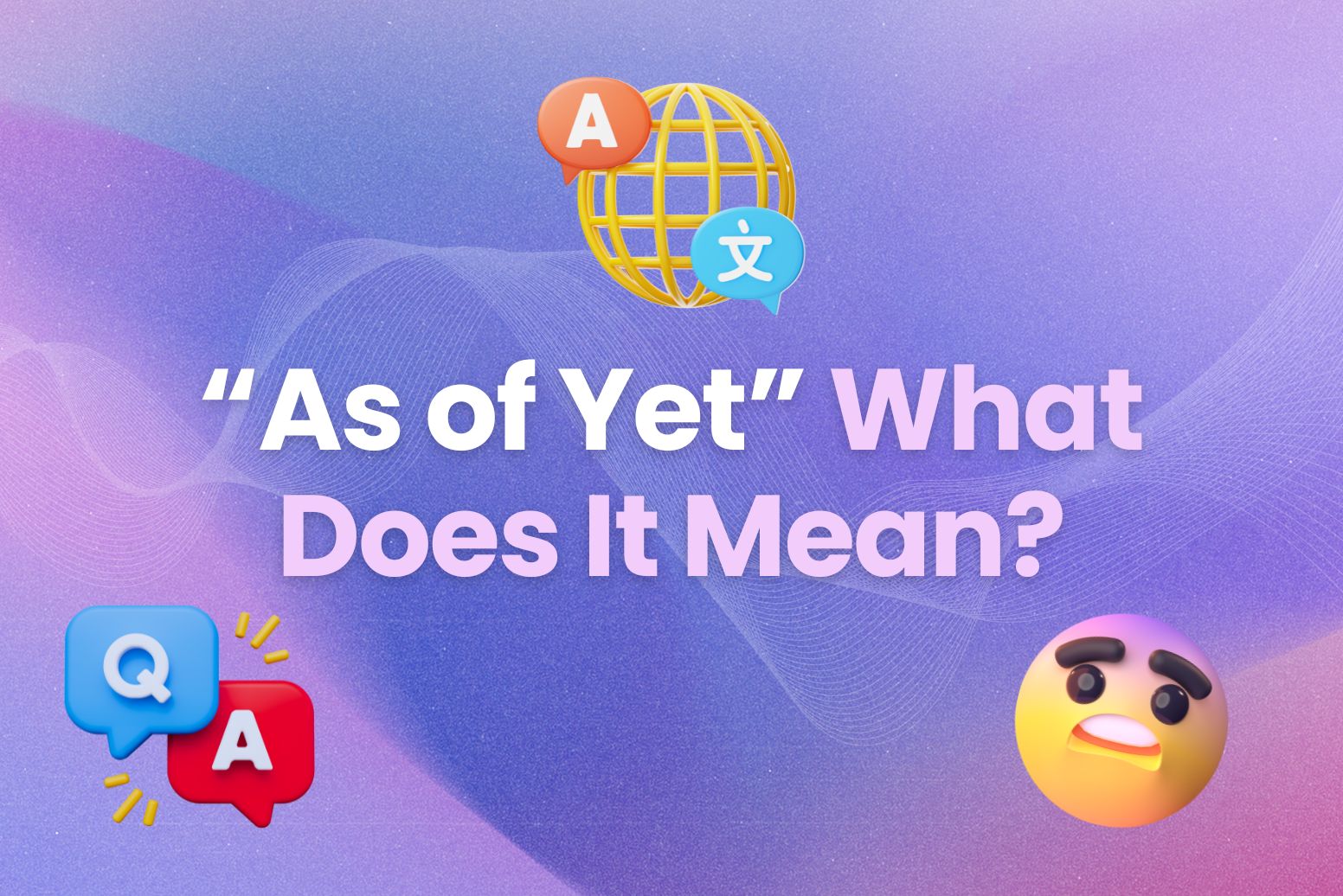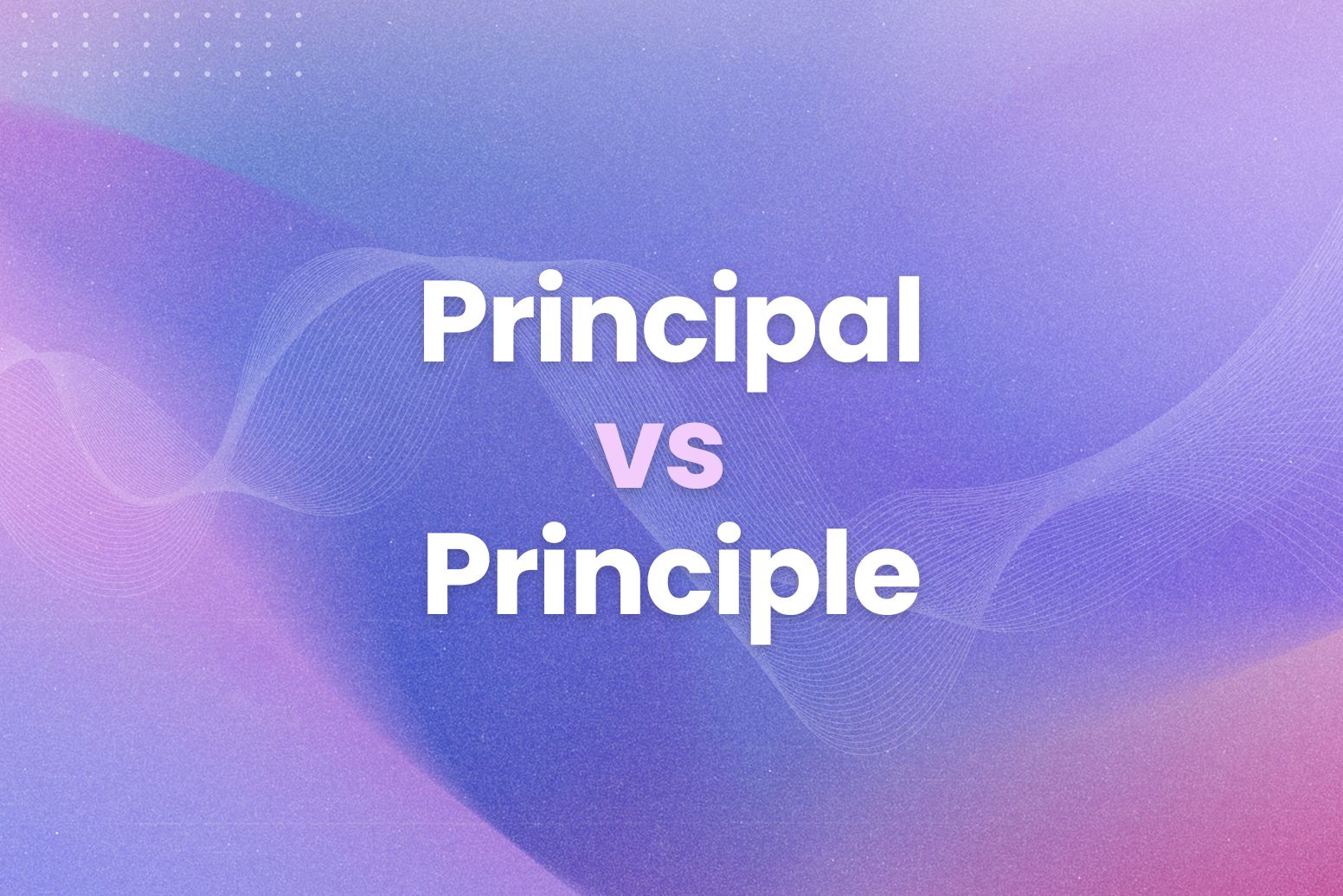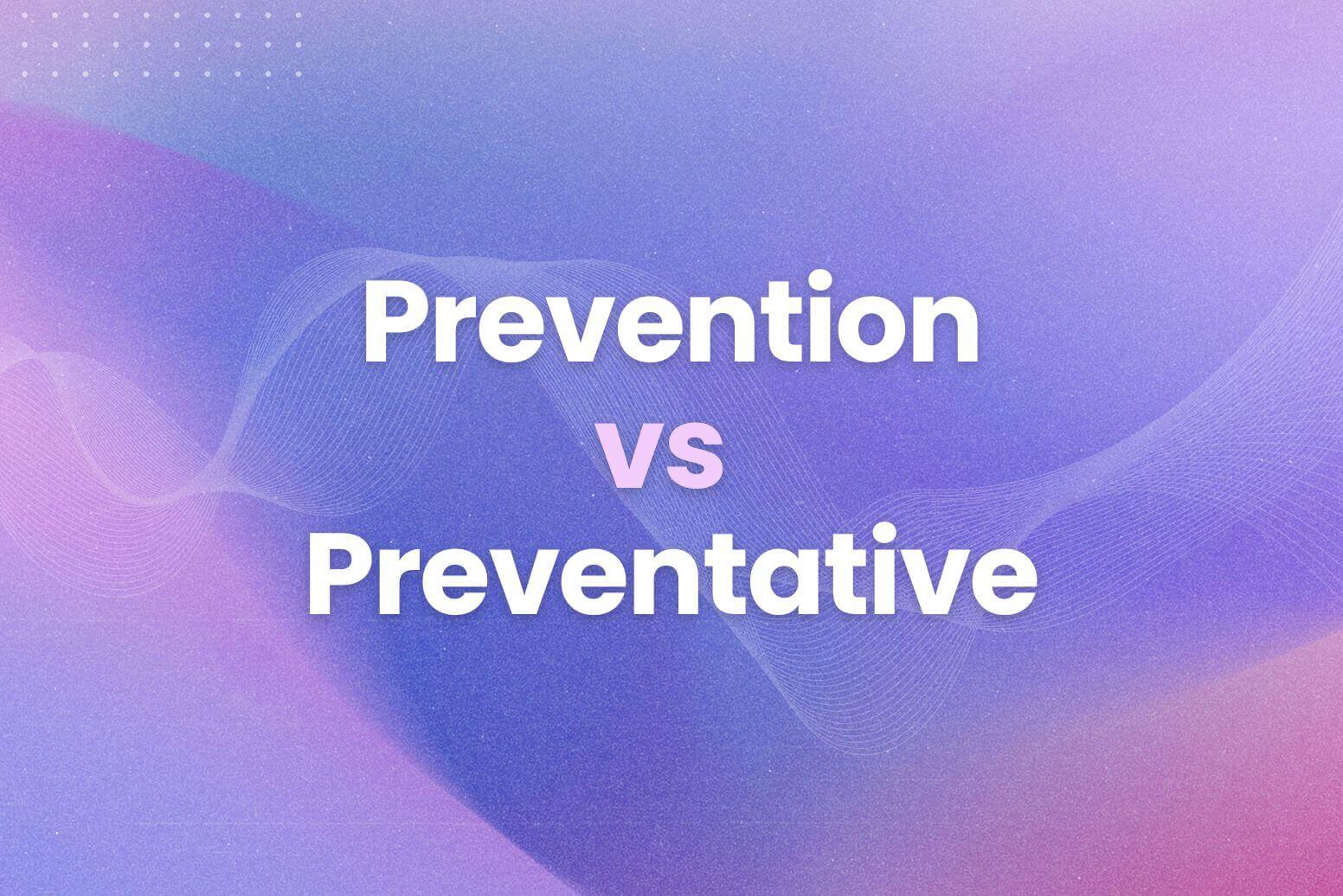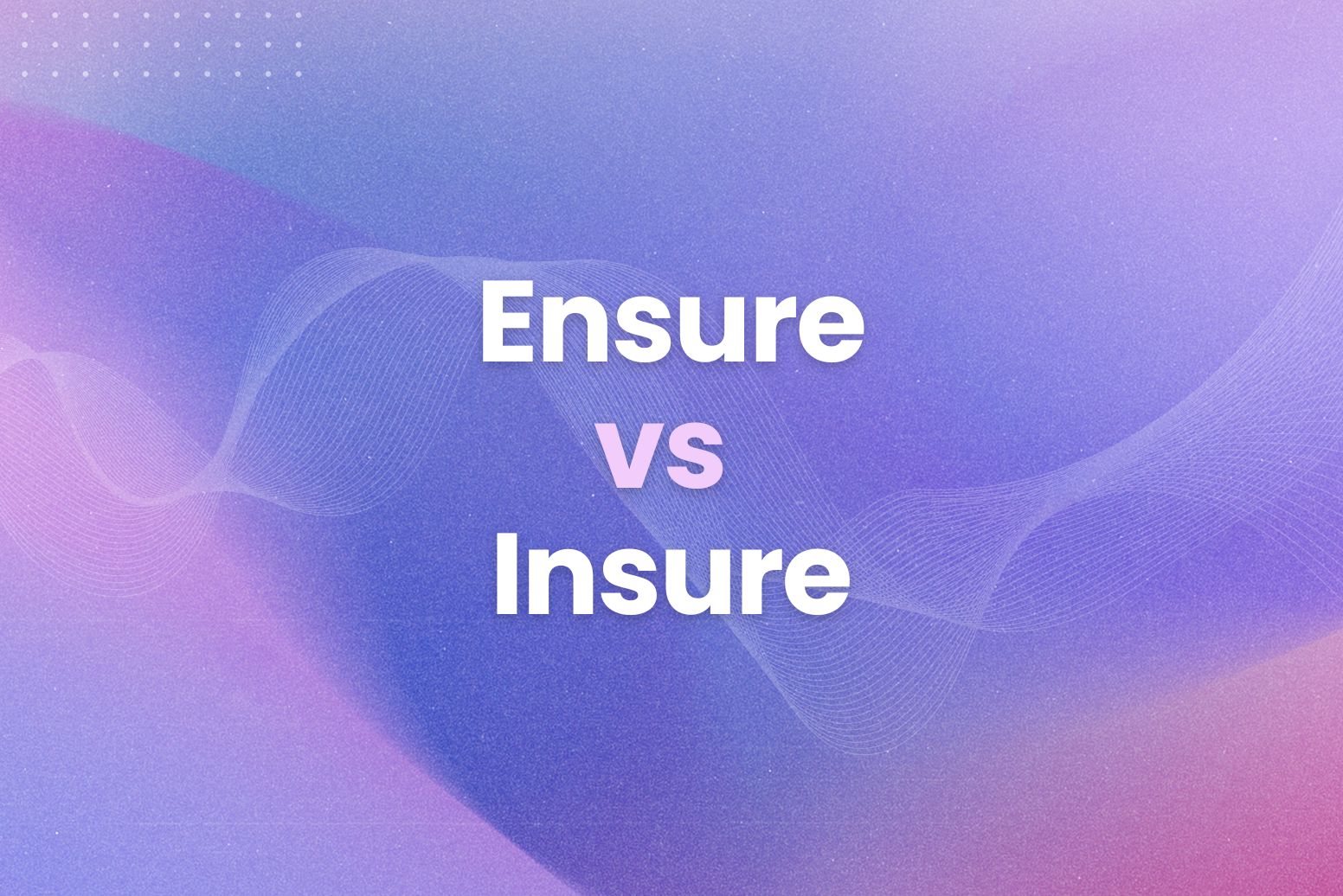Found in professional or academic contexts, “as of yet” is considered to be rather uncommon in day-to-day speech with family or friends, or on social media platforms like Instagram. However, “as of yet” still remains a well-known saying, despite many not fully understanding it.
Want to skip to the good stuff? Try out our free Grammar Checker, perfect for copywriting or learning.
As of Yet Meaning
“As of yet” describes the current state of an action or event that has not yet occurred, while hinting to a blend of precision and subtlety.
It is also typically paired with a hint of anticipation or an ongoing process.
Examples
Here are examples of “as of yet” in use:
Professional Context:
- “The board has not reached a decision as of yet.”
- “As of yet, the company has not announced any plans for expansion into new markets.”
- “As of yet, we have not received feedback from the client on the proposed strategy.”
- “The recruitment process has not yielded any suitable candidates as of yet.”
Academic Context:
- “As of yet, there is no consensus among researchers regarding the effects of the intervention.”
- “No peer-reviewed studies have confirmed the findings as of yet.”
- “As of yet, the proposed model remains theoretical, with no practical applications demonstrated.”
Conversational Use:
- “I haven’t heard back from him as of yet.”
- “I haven’t decided what to cook for dinner as of yet.”
- “As of yet, we haven’t figured out where we’re going for vacation.””I haven’t seen the results of my application as of yet.”
- “As of yet, she hasn’t replied to my message about the meeting.”
- “We haven’t made plans for the weekend as of yet.”
Grammar
The phrase “as of yet” is grammatically correct but often considered too formal or redundant by some, due to its complexity.
Its structure combines:
- “As of” – a prepositional phrase establishing a time reference.
- “Yet” – an adverb signifying something remaining incomplete or unfulfilled.
While perfectly acceptable in formal writing, simpler alternatives like “yet” or “so far” are preferred in casual speech.
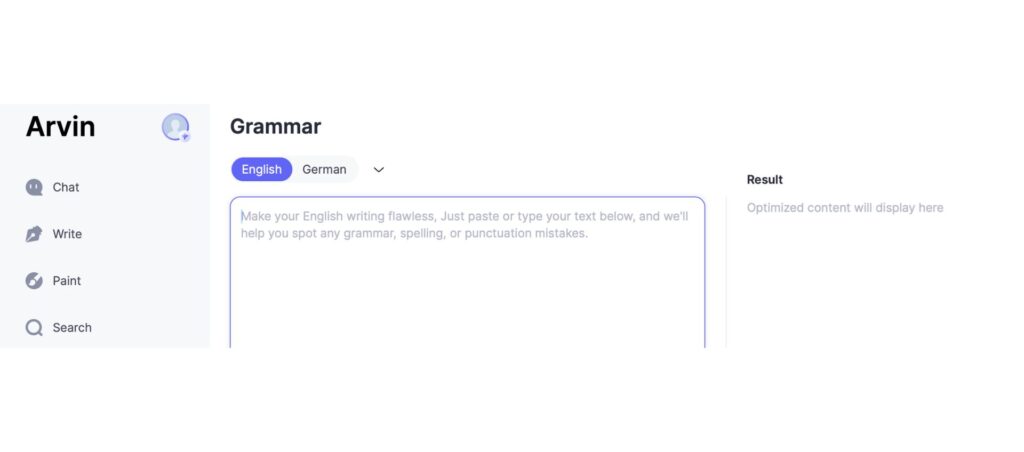
Worried about your grammar skills? You can check your work for free with Arvin AI’s Grammar Checker tool.
As of Yet in a Sentence
Depending on context:
Negative Sentences:
- “The repairs have not been completed as of yet.”
Interrogative Sentences:
- “Are there any updates as of yet?”
Conditional Sentences:
- “As of yet, we haven’t received any new information, but we remain hopeful.”
As of Yet Synonyms
Here are some of the more casual ways to express “as of yet”:
“So far”
- “So far, no updates have been provided.”
- “So far, the project has progressed without any major delays.”
- “I have not received any confirmation so far.”
“Up to now”
- “Up to now, the data remains inconclusive.”
- “Up to now, all efforts to resolve the issue have been unsuccessful.”
- “The findings remain consistent with the hypothesis up to now.”
“Thus far”
- “Thus far, the response from stakeholders has been positive.”
- “The initiative has proven effective thus far.”
- “Thus far, there is no evidence to suggest a different outcome.”
“At this point”
- “I don’t know why you are still insisting on doing it, especially at this point in time”
- “At this point, I’m not sure that the effort you’ve put in will pay off at all”
“As yet”
- “As yet, there have been no changes to the policy.”
- “The committee has not reached a conclusion as yet.”
As of Yet vs As Yet
Although similar, “as of yet” and “as yet” are distinct in usage:
“As yet”
- Slightly more formal and less common but also means “so far.”
- “No resolution has been reached as yet.”
“As of yet”
- Emphasizes the present moment more strongly.
- “There are no developments as of yet.”

Polish your text with our intuitive grammar correction, and a customizable style to match your unique writing style with the Writing Improver.
As of Yet Or As of Now
The choice between “as of yet” and “as of now” depends on context:
“As of yet”
- Conveys ongoing incompletion.
- “No plans have been made as of yet.”
“As of now”
- Indicates the current state without expectation of change.
- “As of now, the office remains closed.”
Not As of Yet Meaning
The phrase “not as of yet” adds a layer of negation to indicate that something has not occurred up to this point.
Examples:
- “Not as of yet has the team finalized the details.”
- “I haven’t tried that new coffee shop, not as of yet.”
- “We haven’t decided on a movie for tonight, not as of yet.”
- “Not as of yet have I managed to bake cookies without burning them!”
Nothing As of Yet Meaning
“Nothing as of yet” highlights the absence of any progress or result up to the present moment.
Examples:
- “We have heard nothing as of yet from the contractor about the project’s progress.”
- “We’ve been brainstorming for hours, but nothing as of yet feels quite right.”
Final Words
The phrase “as of yet” holds a special place in English, despite being relatively difficult to use or understand. Regardless, its ability to make the context subtle yet precise makes it remain a preferred choice in professional and academic writing and speech.
Take charge of your writing with Arvin AI, with tools like the Grammar Checker, Writing Improver, or even the AI Email Writer.
FAQ
Yes, it is correct to say “as of yet.” However, shorter alternatives like “yet” or “so far” are preferred for simplicity. If you are still unsure, check your writing with Arvin AI’s Grammar Checker.
They are saying that an anticipated action or event has not occurred, but there is potential for it to happen in the future.
“I haven’t made any plans for the weekend as yet.”
“As yet” means “up to this point in time” or “so far.”
Yes, “as of yet” is grammatically correct. It combines the prepositional phrase “as of” with the adverb “yet”.
The phrase “as yet“ is a concise way to say “so far” or “up to this point,”.
No, “as of yet” does not require hyphenation.
As an adverb, “yet” often denotes time, suggesting that something has not happened but might occur in the future.
Depending on the context, “So far”, “To date”, “As yet” and “Thus far” are other ways of saying as of yet.
This phrase indicates that no plans have been made so far but leaves room for future planning.

